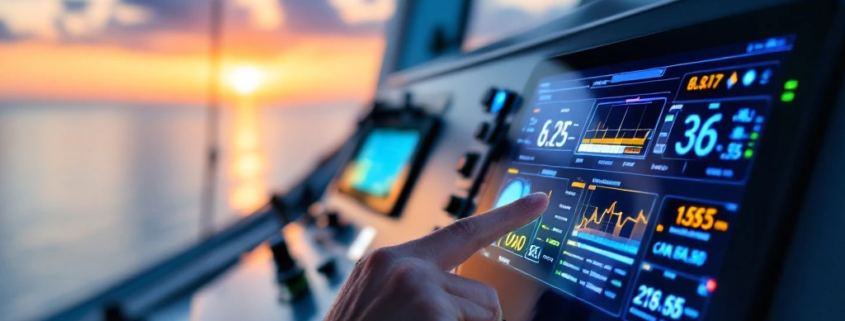What Strategies Improve Safety in Marine Control Systems?
Maritime operations require robust safety protocols, especially in vessel control systems where technology failures can lead to severe consequences. Effective safety enhancement in marine control environments combines redundant hardware architecture, regulatory compliance, regular maintenance, risk assessment protocols, and crew training programs. These elements create a multi-layered approach that prevents system failures, enables quick recovery from malfunctions, and ensures reliable vessel operation even in challenging conditions.
What Strategies Improve Safety in Marine Control Systems: A Comprehensive Guide
The maritime industry faces unique challenges in maintaining operational safety, with vessels navigating unpredictable environments while carrying valuable cargo and human lives. Control systems form the backbone of modern maritime operations, managing everything from navigation and propulsion to critical safety functions. Their reliability directly impacts vessel safety, environmental protection, and operational efficiency.
Advanced marine control safety approaches include implementing robust redundancy architectures, adhering to international safety standards, conducting thorough risk assessments, establishing preventative maintenance protocols, and providing comprehensive operator training. These interconnected strategies work together to create multiple layers of protection against system failures while enabling efficient recovery when issues arise.
For maritime operators, understanding these safety principles isn’t just about regulatory compliance—it’s about protecting assets, personnel, and the environment while maintaining operational continuity in challenging conditions.
How do redundancy systems enhance marine control safety?
Redundancy serves as a cornerstone of marine control system safety by ensuring operational continuity even when individual components fail. This approach involves duplicating critical systems, components, and communication pathways to eliminate single points of failure that could compromise vessel operations or safety functions.
At its core, marine control redundancy incorporates several key principles. Backup systems remain in standby mode, ready to activate instantly when primary systems malfunction. Fail-safe mechanisms automatically detect failures and transition to secure operational states. Fault tolerance designs allow systems to continue functioning, perhaps with reduced capabilities, rather than shutting down completely when minor issues occur.
Modern vessel control architectures typically implement redundancy at multiple levels:
- Hardware redundancy with duplicate processors, power supplies, and sensors
- Network redundancy with alternative communication pathways
- Software redundancy with independent programming and error detection
- Geographical redundancy with physically separated control stations
This multi-layered approach prevents cascading failures during critical operations like docking, navigating congested waterways, or managing emergency situations. When primary systems encounter issues, the transition to backup systems occurs automatically, often without operator intervention, maintaining seamless control throughout the incident.
What are the regulatory requirements for marine control system safety?
Maritime control systems operate within a comprehensive regulatory framework designed to ensure consistent safety standards across the global shipping industry. These regulations provide minimum safety requirements while establishing verification procedures to confirm compliance.
The International Maritime Organization (IMO) establishes foundational safety standards through instruments like the Safety of Life at Sea (SOLAS) convention. These international frameworks set baseline requirements for vessel control systems, including specifications for essential functions, failure response mechanisms, and testing protocols. SOLAS particularly emphasizes requirements for navigation systems, emergency controls, and propulsion management.
Classification societies play a crucial role in implementing and enforcing these standards. Organizations like DNV (Det Norske Veritas) and Lloyd’s Register develop detailed technical rules and certification processes based on international requirements. Their guidelines cover aspects such as:
- System redundancy requirements
- Failure mode analysis procedures
- Testing and certification protocols
- Integration standards between different systems
- Software reliability verification
Compliance with these frameworks involves rigorous testing, documentation, and periodic re-certification. Control systems must undergo type approval processes demonstrating performance under various conditions, including extreme scenarios and failure simulations. This regulatory approach ensures consistent safety standards while promoting continuous improvement in marine control technology.
How does regular maintenance affect marine control system reliability?
Maintenance strategies directly impact marine control system reliability, with preventative approaches significantly reducing the likelihood of unexpected failures. Industry observations indicate that inadequate maintenance contributes to a substantial percentage of marine automation incidents, making proper maintenance protocols essential for operational safety.
Effective maintenance programs for marine control systems typically incorporate several approaches. Preventative maintenance follows manufacturer-recommended schedules for component replacement, calibration, and testing before failures occur. Condition monitoring employs sensors and diagnostic systems to continuously evaluate system health, identifying potential issues before they impact performance. Predictive maintenance analyzes operational data to forecast when components might fail, enabling planned interventions.
Best practices for maintaining marine control reliability include:
- Documenting all maintenance activities with detailed records
- Verifying system performance after any component replacement
- Testing redundancy mechanisms regularly to confirm functionality
- Updating software and firmware to address known vulnerabilities
- Conducting periodic full-system verification tests
The correlation between maintenance quality and system reliability becomes particularly apparent during critical operations or emergency situations. Well-maintained systems respond predictably to commands, provide accurate information, and maintain their protective functions even under stress, while poorly maintained systems may exhibit unexpected behaviors precisely when reliability matters most.
Essential Marine Control Safety Takeaways for Maritime Operators
Effective management of marine control safety requires a comprehensive approach integrating technical, operational, and human factors. Maritime operators should focus on implementing multiple protective layers rather than relying on single safety mechanisms.
Key implementation strategies include:
- System architecture evaluation – Regularly assess control systems for single points of failure and implement appropriate redundancy
- Regulatory compliance management – Maintain comprehensive documentation of safety certifications and schedule recertification activities well before deadlines
- Maintenance program enhancement – Develop structured maintenance protocols combining manufacturer recommendations with vessel-specific operational patterns
- Risk assessment integration – Conduct systematic evaluations of potential failure scenarios and develop specific mitigation strategies
- Crew training reinforcement – Ensure operators understand both normal system operation and emergency response procedures
These strategies work together to create robust safety mechanisms that prevent incidents while enabling effective responses when problems occur. By addressing technical system design, regulatory requirements, maintenance practices, and human factors simultaneously, maritime operators can significantly enhance control system safety while improving operational reliability.
At TKE Sweden AB, we understand the critical importance of robust, reliable control systems in maritime environments. Our expertise in CAN-bus technology provides the foundation for developing solutions that meet the highest safety standards while delivering the performance maritime operators require.
Interested in marine automation and control systems?
Browse our marine case studies to see how we support safe, efficient operations in harsh marine environments through smart CAN networking.



